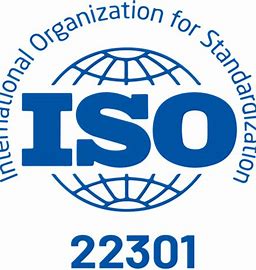 The capabilities of the Telecentras to ensure continuity of operations in emergency situations as well as to model potential accidents and their liquidation scenarios has been assessed by the international standard ISO 22301:2019.
The capabilities of the Telecentras to ensure continuity of operations in emergency situations as well as to model potential accidents and their liquidation scenarios has been assessed by the international standard ISO 22301:2019.
The audit of Telecentre’s compliance with the ISO 22301:2019 standard was carried out by the Baltic States GCERT BALTIC which is the branch of the International accreditation service (IAS) accredited Management Systems Certification Company GCERTI Co Ltd (South Korea). According to Edita Nemira, the chief auditor who carried out the audit, the ISO 22301 management standard is specific and poses considerable challenges for both aplying and auditing organizations.
“As far as I know, there are very few organizations in Lithuania which have a certificate of compliance with the ISO 22301:2019 standard. This is due to the fact that the requirements of the standard are extremely high, they are oriented to assess how the organization is prepared to deal with serious disruptions, such as complete or partial shutdown of technological systems, social, natural or technological disasters, how the company is ready to remain viable and ensure obliged activities and functions in case of incidents and accidents,” says E. Nemira.
According to Telecentras Risk Prevention and Management expert Mažvydė Kemerzūnė, the business continuity management system implemented in the company and supported in accordance with the international ISO 22301 standard ensures the organization’s preparedness for possible operational disruptions. This framework includes a comprehensive assessment of risks and potential impacts, incident prevention and response planning, the development of remediation strategies, as well as regular preparedness testing – including exercises and simulations of emergency situations. ISO 22301 has significantly increased the company’s resilience to potential threats, reduced their probability and ensured an acceptable level of service provision and post-event recovery.
“We are the main sender of radio and television programmes in Lithuania, including the broadcasts of the national broadcaster LRT. Therefore, one of the most important scenarios we modelled is the disruption of the broadcasting of radio programmes occurring throughout the country and our actions aimed at restoring radio broadcasts. Similar scenarios and restoration plans are prepared for the data centres and other critical services provided by Telecentras,” says M. Kemerzūnė.

